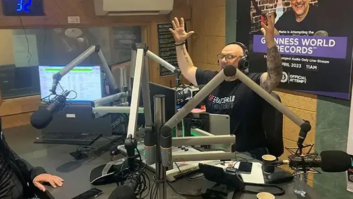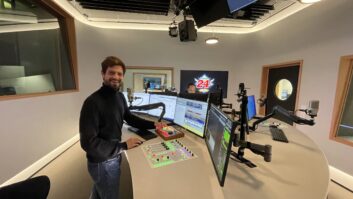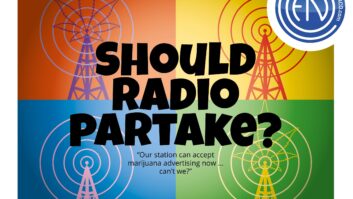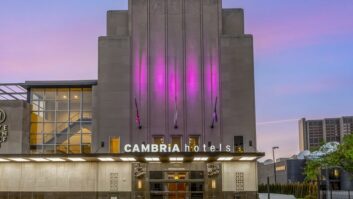WASHINGTON The Federal Communications Commission is reviewing public comments filed regarding the “Radio Rescue Petition” proposed this summer by the Minority Media Telecommunications Council.
Twenty-two comments and 10 replies were filed on the 17 mostly technical proposals.
The MMTC wants the FCC to set up an “AM transition federal advisory committee” in regards to re-purposing TV analog Channels 5 and 6 for radio, echoing proposals made by other groups.
MMTC also proposes to modify AM nighttime coverage rules, replace the minimum efficiency standard for AMs with a minimum radiation standard, tweak certain FM classes in Zones I and IA, create a new “L” class of LPFMs and relax main studio rules. (It also wants the FCC to extend the three-year period for new CPs, look into a new radio agreement with Cuba, hold tutorials on radio engineering rules, create a “broadcast public engineer” position to help small businesses and nonprofits and make other changes.) Much of the reaction concerned the possible re-purposing of Channels 5 and 6. What follows are excerpts of some of the initial comments; we’ll have additional excerpts in a future issue.
Benefits for FM and AM
Minority Media Telecommunications Council has endorsed the proposal submitted by Broadcast Maximization Committee for the use of the vacated spectrum in television Channels 5 and 6 (76–88 MHz) and has suggested the creation of an advisory committee in order to speed up the process of considering the merits of the proposal.
BMC has proposed to (1) relocate the LPFM service to a portion of this spectrum space; (2) expand the NCE service into the adjacent portion of this band; and (3) provide for the conversion and migration of all AM stations into the remaining portion of the band over an extended period of time and with digital transmissions only.
BMC believes that the benefits from this proposal to all of the broadcast services are enormous. Thousands more LPFM stations can operate — free from interference caused to their limited signals, without having to fight with FM translators over spectrum, without having to share the FM band and without subjecting LPFM stations to possible displacement while greatly expanding the service to new and diverse entrants.
NCE stations will benefit from the expansion of its service and the location of this available space adjacent to the current reserved portion of the FM band, presenting a perfect opportunity for this expansion. Based on the large number of applications filed in the last filing window, there is a tremendous amount of interest in providing additional local and specialized NCE programming to diverse and underserved groups.
The greatest benefit will be conferred to the AM service. … BMC has developed a plan to convert and provide for the migration over an extended period of time for all AM stations to operate in the Ch. 5/6 band in the digital mode.
Since the filing of the BMC proposal … [r]epresentatives from Canada have contacted BMC and expressed its keen interest in the concept of using the Channel 5/6 spectrum for this purpose in Canada. BMC recognizes there are also industry groups opposed to the plan and issues to overcome. As a result, BMC believes that an advisory committee may be a reasonable solution to the current impasse.
Broadcast Maximization Committee
Birmingham, Ala.
Use the Space for LPFM
The commission should not create a Local “L” class of LPFM stations and protect it from broadcasters maximizing their full-power station’s facilities.
While perhaps supported by an admirable ideal, such an approach could impede rather than advance radio’s recovery from current economic doldrums and result in inefficient use of spectrum, and there are in any event alternatives that avoid these pitfalls.
Similarly, MMTC’s proposal that the FCC maintain a rule of 10 translator applications per applicant is especially troubling for long-standing FM translator licensees/applicants like EMF. Like the L-Class proposal, the goal underlying this restriction — providing opportunities for new LPFMs — can be equally well met by proposals to re-use vacated analog TV Channels 5 and 6, which avoid restricting or otherwise harming FM translator licensees, applicants and listeners.
Instead of the limit MMTC proposes, the FCC should, per EMF’s related proposal last year, reallocate vacated analog TV Channels 5 and 6 to FM broadcasting and reserve the top two or three channels of that spectrum for LPFMs, rather than moving forward with mass dismissals of FM translator applications and/or proposals that would harm translator services on which the public has come to rely.
Making this spectrum available to LPFM is preferable to simply shuffling the decks by trading existing or potential translators in favor of LPFM service, and in that regard the reallocation-and-reservation would do much more to add new services and opportunities.
Educational Media Foundation
Rocklin, Calif.
Disruptive Idea
MMTC suggests tasking the Channel 5/6 Committee with evaluation of a proposal by the Broadcast Maximization Committee to relocate certain incumbent digital television stations operating on television Channels 5 and 6 to new television channels in order to accommodate the migration of radio stations to television Channels 5 and 6.
[T]he committee is unnecessary because the commission already has determined that continued use of Channels 5 and 6 for television service is in the public interest. Moreover, adoption of any recommendation by the Channel 5/6 Committee to reallocate Channels 5 and 6 to radio services would be disruptive to both the DTY transition process and viewers and, therefore, would be contrary to the public interest.
Disney-ABC
Washington
No Spectrum Grab
Signal Above is the licensee of low-power television station WDCN(LP), Fairfax, Va., serving the D.C. metro area on Channel 6. It is currently operating as an analog facility and has expended considerable resources to construct and operate its facility. …
Any alleged need to expand the FM band to provide relief for AM broadcasters and LPFM has been significantly addressed already by the commission’s new rules allowing the use of FM translators by AM stations as well as legislation well on its way to passage that would allow for greatly enhanced opportunities for expanded LPFM service.
Lastly, the transition to digital has effectively allowed for the tripling of the number of radio signals as more and more stations go digital and broadcast on channel HD1–HD3. The need to expand the band does not exist and certainly not at the expense of eliminating existing Channels 5 and 6 LPTV broadcasters who are already providing valuable service.
[E]limination of Channels 5 and 6 affects far more than the approximately 20 full-power television stations that already have post-transitional licenses on Channels 5 and 6. It affects hundreds of low-power stations like Signal Above and their viewers.
Contrary to the suggestion of MMTC, there has never been less of a need to expand the FM band. AM stations will be on an equal footing with FM stations as the transition to digital progresses. Furthermore, the commission has provided immediate relief to AM broadcasters by allowing the use of translators which doubles the signals for many AM stations by providing both an AM and FM signal of the same programming in a market. …
Further, the answer to the argument that not all AM stations have access to available translators is to open a translator window for AM stations, not to grab spectrum already being used by LPTV operators. …
Signal Above proposes that the commission reject the MMTC proposal or consider alternatives which will both protect LPTV broadcasters and their viewers and provide for expanded radio service.
One suggested option is that all full-power and low-power stations licensed on Channel 5 or 6 be grandfathered and that otherwise any available frequency in the 7688 MHz band could be used for expanded radio service.
Signal Above
Fairfax, Va.












